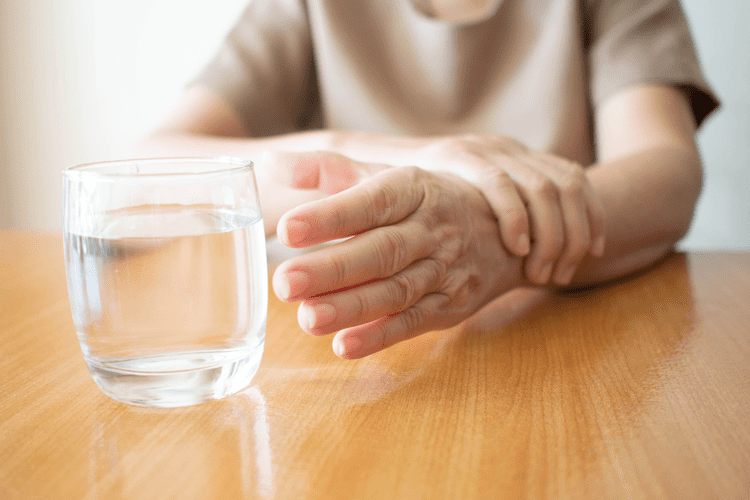Physiological triggers include physical withdrawal symptoms like nausea, sweating, and anxiety, which can occur in the early stages of recovery. These symptoms can be intensely uncomfortable, and can make it hard to resist using substances to make them go away. This is why it’s so important to detox from drugs and alcohol in a medically supervised environment. You may have heard before that “the first 30 days can be the hardest,” and experts tend to agree. During this time, the body and mind go through a substantial process of recovery.
Step 7: Participate in Aftercare Programs
When you stop drinking and start focusing on your health, you’ll likely start to feel better once your body is properly nourished. Alcohol can also trigger the release of chemicals called endorphins and raise levels of the “feel good” hormone dopamine. This can make you feel energetic and even extremely happy (euphoric) shortly after you drink alcohol, but the effects don’t last. There are certain brain chemicals called excitatory neurotransmitters that will stop doing their job when you drink, which can make you feel sleepy and sedated.
Health Risks of Alcohol Use
Your commitment to sobriety, combined with the support of loved ones and tools like Soberlink, can help you build a healthier, alcohol-free life. In addiction treatment, CBT teaches behavioral strategies for managing cravings. If certain places or situations consistently trigger you, your therapist can help you develop a plan to avoid them or create healthier alternatives.
Identify Your Personal Triggers
Just as no one treatment plan fits all people, no one treatment plan may be suitable for the entire time you are in a formal treatment program. What type of treatment you need depends https://thesandiegodigest.com/top-5-advantages-of-staying-in-a-sober-living-house/ on several factors, including the severity of your addiction. For instance, if your substance use disorder is diagnosed as mild, an outpatient program might be recommended.

Best for the sober curious
The more strategies you learn to identify triggers, cope with stress, and manage your new sober life, the easier it is to prevent relapse. One study found that mutual support groups can be as effective as 12-step programs and may help improve the odds of success for people who are committed to maintaining a lifetime of total abstinence. It may help to pick a quit date, or a day when you choose to discontinue use of alcohol or drugs. It’s also helpful to change your environment—for instance, avoid going to bars. There are also resources such as 12-step groups and recovery groups.
Research proves that an individual in recovery is highly vulnerable to relapse during the first 90 days and that success during this time is correlated with long-term success. Recovery management is an established intervention demonstrated to improve recovery rates for patients with substance use disorder, and engagement in this type of service means long-term recovery is more likely. Research shows that some damage to your brain, liver, heart, and gut done by alcohol will slowly heal when you stop drinking. While it’s true that alcohol withdrawal symptoms can be severe, they will not last forever.
Reduced Heart Disease Risk
- For many, returning to daily life after treatment means returning home to family, which is why family can be the strongest social support system.
- You must be ready to change in order to find the best treatment program for you.
- Other definitions, however, often focus on the process of recovery and developing coping mechanisms and habits that support health and wellness over the long term.
- The evidence shows that every day, people choose to recover from addiction on their own.
You may find yourself leaning on your trusted support system a lot and breaking ties with those who do not aid you in your recovery. For many people with a substance use disorder, it’s simply a matter of never having learned the appropriate way to manage anger. Talk to your therapist, other healthcare provider, or sponsor about how to deal with your anger in ways that won’t cause you to harm yourself or others or turn to alcohol or drugs. Some people may find that wearable devices and smartphone apps can support their recovery from alcohol use disorder. Biosensors monitor physical changes, detect alcohol use, and identify relapse risk. Studies suggest digital health options can improve access to care for some of the 15 million people experiencing alcohol use disorder each year.

Many people who experience a journey of recovery from addiction consistently learn more about themselves. They learn how to cope with stress and discover what is most important in their lives. An emotionally sober person no longer escapes their emotions with drugs or alcohol. While emotionally Sober House sober people may not always feel happy, they are no longer victims of their feelings and emotions. Emotional sobriety can be defined as the capability of embracing feelings. If you have severe AUD, a rehabilitation center can provide around-the-clock care and medical attention.
After you drink alcohol, Volpicelli explains that the small molecules inside it get absorbed by your gut. From there, they travel to other parts of your body and affect organ systems, including the cardiovascular, immune, and nervous systems, along the way. This gives you a quick and easy explanation for why you aren’t drinking. It also gives you a sense of purpose that can help you stay focused. You may want to start an exercise routine — exercise releases brain chemicals called endorphins, which can make you feel good.